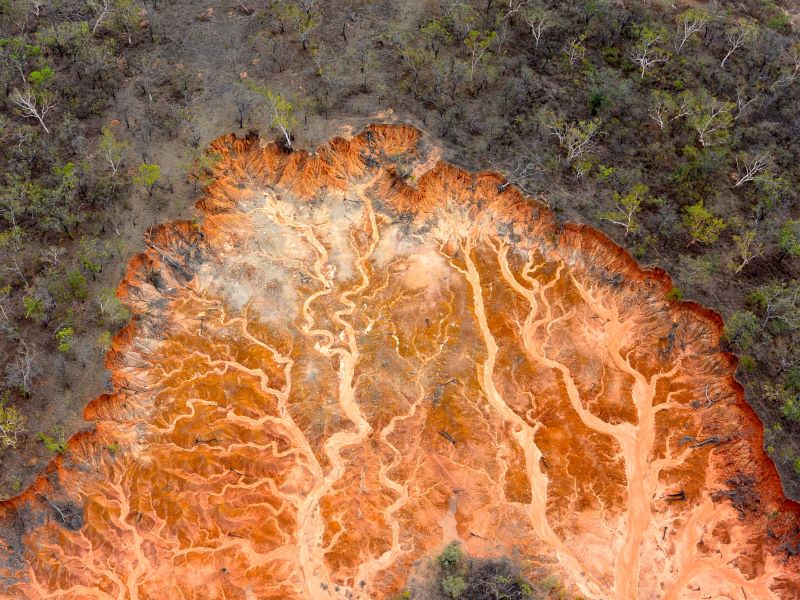Australia’s scientists have called for a new national information system led by an independent agency to manage biodiversity data in response to a shocking report on the state of Australia’s environment. The new Labor government has flagged better data will be among its initial responses to the report, and has promised that structural reforms will follow.
Released Tuesday after being held back by the Morrison government, the Australia state of the environment 2021 report warns of a “poor and deteriorating” trend in Australia’s environment over the past five years.
Climate change, habitat loss, invasive species, pollution and resource extraction are the increasing pressures threatening Australian species and ecosystems, according to the five-year study, which recommends well resourced, innovative, responsive and collaborative management measures to turn things around.

Minister for the Environment and Water Tanya Plibersek released the report and addressed the National Press Club on Tuesday, blaming the degradation on a “lost decade” under the previous government, which she accused of burying the report it received last year but never released.
In response to the report and similar warnings in the damning Samuel Review of Australia’s main environmental protection law in 2020, Ms Plibersek committed to structural reforms to environmental laws and institutions, and an increase to the amount of land and ocean protected under to Australia’s National Estate.
“Without structural change, we’ll be resigning ourselves to another decade of failure without the tools we need to arrest our decline. We all want to pass on a healthy environment to our children and grandchildren,” she said.
The “once in a generation” reforms to environmental laws and institutions are likely to take years, but Ms Plibersek committed the new government to a formal response to the Samuel Review by the end of this year and new legislation to be drafted by 2023.
A new Environment Protection Agency – a policy Labor took to the election before it had seen the state of environment report – will also be established to enforce the new laws, improve processes, and centralise data collection and analysis.
The new agency will have a dedicated environmental data, information and analysis division alongside the compliance and assurance division.
“I hope the [structural] changes will last for decades [and that] they will deliver better environmental protections and deliver faster and clearer decision-making,” Ms Plibersek said.
In the meantime, immediate work will start on improving environmental data, standards and regional planning.
“Establishing a shared view around what needs to be protected and restored, the areas where development can occur with minimal consequences,” she said.
In its response to the “grim” outlook in the latest State of the Environment report, the Australian Academy of Science reiterated its call for a new national information system led by an independent agency.
“The report makes clear that there is a significant under-investment in the scientific knowledge and capacity needed to understand the state of the environment, to aid decision-making and address emerging threats,” the Academy’s President, Professor Chennupati Jagadish said.
“It also identifies a concerning lack of expertise in taxonomic sciences, heritage protection and digital analytical capacity, especially in artificial intelligence and machine learning. What matters most is what steps governments take from here.”
The Academy called for the agency in 2020, when the Samuels Review was released, recommending it function for biodiversity data and forecasting as the Bureau of Meteorology does for weather.
In light of the more recent State of Environment report, the Academy also wants the government to “revisit” its 2030 emissions reduction target of 43 per cent.
But Ms Plibersek ruled that out again on Tuesday, saying the target was an election “promise” Labor will keep.
“I’m delighted one of the first things we will do as a new government is legislate higher ambition on climate change policies. I’m proud of that and of course we will work cooperatively with all of the crossbench and indeed with the Liberals and Nationals, it would be terrific got maximum consensus, on the carbon pollution reduction target and the other elements of the legislation we are taking to the Parliament.
“But we have to keep our promise to The Australian people,” Ms Plibersek said.
The State of the Environment report’s lead authors are CSIRO’s Dr Ian Cresswell, Indigenous culture expert and Wuthathi/Meriam woman Dr Terri Janke, and Sydney University Deputy Vice-Chancellor Research, Professor Emma L Johnston.
Several other CSIRO scientists contributed to the State of Environment report and the science agency’s chief executive Dr Larry Marshall urged all Australians not to ignore its findings.
“Scientists from across Australia have meticulously gathered and assessed the evidence that has contributed to this timely snapshot of Australia’s environment, which is facing significant challenges due to increasing pressures from climate change, pollution, resource extraction, habitat loss and invasive species,” Dr Marshall said
“I would urge all Australians to engage deeply with this report, as a declining environment affects all of us. By working together to take action, we can help our environment to heal.”
Do you know more? Contact James Riley via Email.

